Where and how is a hand pump used for a well
Modern progress and numerous recent developments in many areas of life can not always reach small villages, so there is not even electric power. At the same time, it is impossible to live in a country plot without water, so often you can see wells or wells there.
If in the first case it is enough to have a bucket with a rope, in the second case you can use a hand pump for wells, which will be replaced by muscular power with electric power.
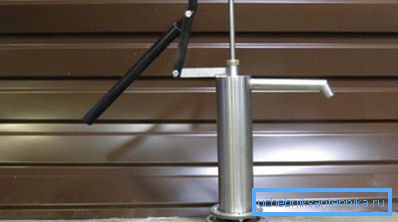
Often, you can even see in combined with electricity-free areas a combined rise of water in the event that it can suddenly and for a long time be turned off. Even despite the huge number of models that run on electricity, the manual versions still have not lost their relevance.
Comparison
If you want to compare between automatic and manual pumps for wells, this question will be quite complicated. It cannot be answered unambiguously, because each of the types has advantages in certain situations.
When considering the manual version, the situation with a complete or periodic lack of electricity always comes to the fore. In this case, such a well model is difficult to replace with something.
In addition, such equipment is quite simple, that it can be done even with your own hands, and how to make it read on our website. Installation, not to mention the maintenance and operation, also does not cause difficulties, since it does not require the supply of electricity, the organization of the protection of wires and automation.
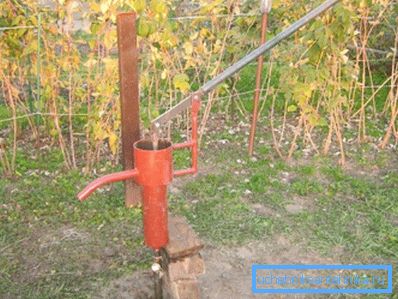
Among the shortcomings, the main one should be singled out - physical force will be required to supply water. However, the problem is solved by increasing the lever arm.
Plus, automatic pumping equipment - pumping water is not difficult. You simply press the “Start” button or toggle switch and fill the necessary container with liquid or take it through the pipeline to the house.
Disadvantages associated with the shutdown of electrical energy. When it is not there, it means that you will not be able to lift water from the well. In addition, this unit is a complex device, which is associated with difficulties during repair work.
Often you have to buy new equipment, since the old can not be repaired or the price of repair is not profitable. Installing an automatic pump is more difficult, although it all depends on the model, the method of lifting water and skills.
Summary:
- Manual borehole pump is easy to maintain, install and operate. It can be used anywhere, for example, in nature. It does not require the supply of electricity, respectively, you do not incur costs. Because of the simplicity of the design, it has a lower cost. Minus - for lifting water requires physical effort;
- automatic pump allows you to deliver without effort water from the well to the surface. The disadvantages are the dependence on electrical energy, the high cost of equipment, a complex device that requires special repair, as well as technically complex installation instructions.
From the above, we can conclude that the use of a hand pump is possible in conditions of even a complete lack of electricity supply, as well as when you have low water consumption.
Tip: it can be used not only for wells, but also for wells.
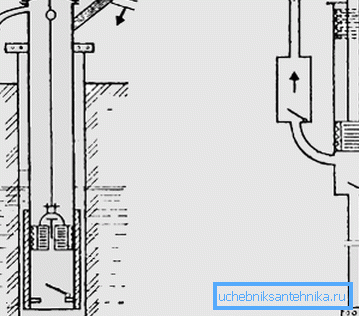
Device and principle of operation
The design of the hand pump for the well includes a cylinder and a piston, which has a piston valve. In the lower part of the cylinder there is a flat valve, which operates according to the vacuum principle.
Piston hand pump
When the piston is lowered, the valve also closes so that water enters the space above the piston. When the piston is lifted, the fluid fills the space below it, helping to discharge the air. At this point, the suction valve, which is located at the end of the cylinder, begins to open, and the piston valve begins to close.
Kinds
- The sucker-rod pump is used for wells where the level of the water mirror is below 7 m.
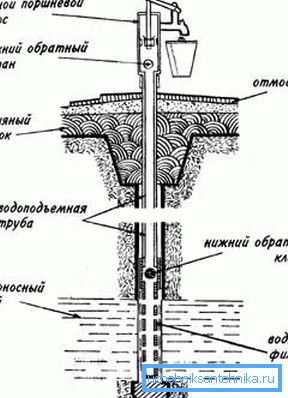
Before the start of equipment operation, its pumping cylinder is lowered to the depth of the well or well. The casing is attached to the casing.
To raise the water, install a check valve end of the suction pipe. It does not require much effort, financial expenditure and a lot of time.
Parts and housing equipment made of bronze.
Device:
- housing;
- cap;
- four-valve "wing";
- lever arm;
- suction part;
- shaft with seal.
When operating, the wing of the lever begins to rotate left and right, i.e. displacing and sucking the liquid, due to which there is a continuous flow of it.
More powerful designs allow you to raise water to the surface from a depth of 16 m.
In this case, a double stroke of the handle can pump out at least 1 liter of fluid. The device consists of a pump, which is attached to the top of the well, several rods and pipes for connection.
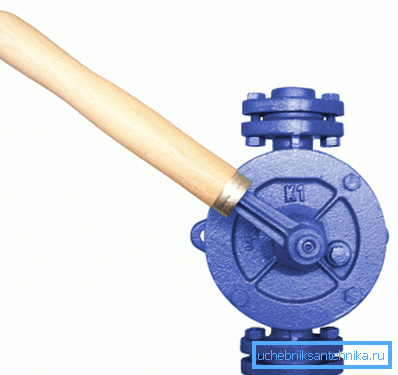
- Pumps "K" series are no less popular than sucker rod pumps. These are self-priming devices, which allow to create a pressure up to 2 atm at the outlet. There is, however, a work restriction - the suction pillar should not exceed 9 m.

Cost of
It can vary greatly and depends on:
- type of product;
- sizes;
- material;
- manufacturer of the unit.
The cost of the product can also be increased due to the brand of the company.
Tip: Often unknown firms offer consumers quite high-quality hand pumps for a well, but at more affordable prices.
Conclusion
The use of a manual pump at a country site to raise water from a well allows us not to use electricity. The equipment is easy to use and operate. In the presented video in this article you will find additional information on this topic.